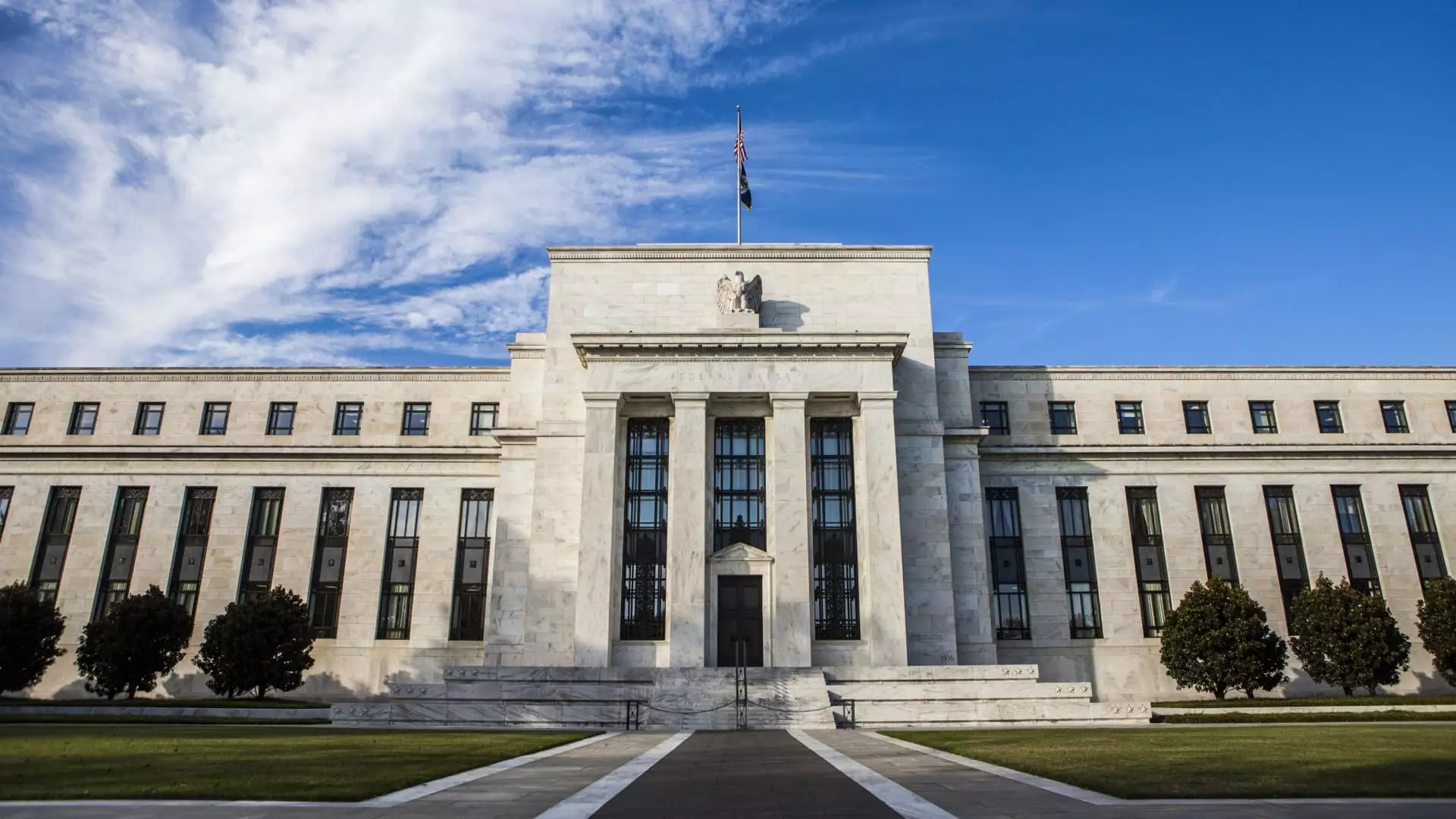The ongoing narrative surrounding the Federal Reserve’s monetary policy is becoming increasingly complex, especially with the looming expectations of interest rate stability. As we approach the central bank’s upcoming two-day meeting, the discourse has intensified, particularly in light of remarks from former President Donald Trump, who has expressed a strong desire for immediate interest rate reductions. This article dissects the current state of interest rates, the implications for consumers, and potential future scenarios as we navigate an economic landscape marked by persistent inflation and fluctuating borrowing costs.
The Federal Reserve has been methodical in adjusting its key benchmark rate, having implemented a staggering increase of 5.25 percentage points between 2022 and 2023 in a bid to combat soaring inflation rates, which consistently exceed the Fed’s target of 2%. This inflationary pressure has prompted severe consumer distress, as the public grapples with the realities of high prices and elevated borrowing costs. In particular, Trump’s assertion that high interest rates are detrimental to the country resonates strongly with consumers who feel the weight of these financial burdens.
However, indications suggest that the Fed is unlikely to act hastily or reduce rates dramatically in the near future. Experts warn that consumers hoping for a rapid intervention to ease their financial woes may find such hopes dashed. According to Matt Schulz, chief credit analyst at LendingTree, the Fed is not poised to provide urgent relief, meaning individuals may need to brace for continued fiscal strain as they navigate this challenging environment.
The Federal Funds Rate represents the interest charged by banks on overnight loans to one another, serving as a critical economic barometer. While this rate does not directly dictate consumer loan rates, it holds significant influence over borrowing costs across various platforms, including mortgages, car loans, and credit cards. When the Fed eventually opts to lower the funds rate, consumers could see a decrease in their borrowing costs, inevitably rendering loans more affordable.
However, even with last year’s rate cut, consumer credit cards—often tied to the Fed’s benchmark—maintain heightened costs. As Greg McBride from Bankrate notes, credit card issuers are typically slow to respond to rate cuts, leading to elevated rates that diminish consumers’ financial flexibility. The current average credit card rate hovers above 20%, marking an alarming trend that has seen delinquencies rise and an increasing number of holders relying on minimum payments.
When considering the mortgage market, it becomes evident that the correlation between the Fed’s decisions and consumer mortgage rates is not straightforward. As mortgage rates continue to climb, borrowers are feeling the impact of higher prices, particularly as most mortgage debt is fixed. Existing homeowners are largely insulated from rate changes until they refinance or relocate, putting pressure on prospective buyers who are facing rising borrowing costs.
The average rate on 30-year fixed mortgages now stands at approximately 7.06%, and prospective homeowners are increasingly sidelined due to affordability issues. Meanwhile, auto loans, which represent a growing segment of consumer credit, have also escalated in cost, with average five-year new car loan rates reaching around 7.47%. As Joseph Yoon from Edmunds articulates, the prospects for new vehicle buyers remain bleak, highlighting a persistent challenge exacerbated by rising prices in the automotive market.
The landscape for student loans presents another layer of complexity, particularly for recent borrowers. While federal student loan rates are fixed and thus insulated from the Fed’s policies in the short term, new undergraduate loans for the 2024-25 academic year reflect a notable increase to 6.53%. This stems from the auction results of the 10-year Treasury note, tying students to potentially higher repayment costs as they graduate and enter a tumultuous job market.
Conversely, the Fed’s current stance has led to attractive yields for savers, with top online savings accounts offering returns close to 5%. McBride points out that, while there may be limited opportunities for consumer borrowing relief in the near future, savers can take advantage of inflation-beating yields for an extended period.
As we steer through this intricate web of interest rates, inflation, and consumer debt, it becomes increasingly clear that both borrowing and saving landscapes are influenced by the Federal Reserve’s cautious calibration of monetary policy. The journey ahead remains fraught with challenges for both consumers and policymakers, with high interest rates continuing to hinder economic growth. Those directly impacted by these policies must employ a strategic approach to managing their finances, while remaining attuned to the Federal Reserve’s decisions that will inevitably sculpt the broader economic horizon.

Leave a Reply